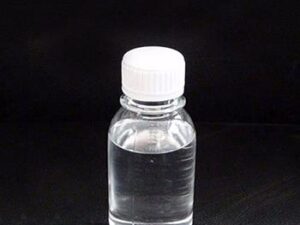Description
The Butterscotch Bandit: Unpacking the Chemistry and Controversy of 2,3-Butanedione (Diacetyl)
2,3-Butanedione, more commonly known as diacetyl, is a naturally occurring compound with a remarkable ability to evoke the aroma and flavor of butter and butterscotch. This versatile molecule has found widespread application in the food and beverage industry, but its story is also intertwined with controversy, particularly concerning the dangers of inhalation exposure. Let’s delve into the science and complexities surrounding this intriguing chemical.
A Sensory Powerhouse:
Diacetyl belongs to the chemical family of alpha-diketones. It’s a relatively simple molecule, yet its olfactory impact is profound. Even at extremely low concentrations, diacetyl provides a characteristic buttery, caramel-like, or butterscotch-like aroma and flavor. This makes it an invaluable ingredient for:
- Food Products: Diacetyl is frequently used to enhance the buttery taste in margarine, popcorn, candy, baked goods, and snack foods. It can also contribute to a more rounded flavor profile in sauces and gravies.
- Beverages: Brewers, distillers, and wineries utilize diacetyl to achieve specific flavor profiles. In beer, a controlled amount of diacetyl can add a desirable buttery note, particularly in certain ale styles. However, excessive diacetyl can be considered an off-flavor. Similarly, in wine and spirits, diacetyl can contribute to complexity and richness.
- Flavor Enhancement: The food industry utilizes diacetyl in various flavorings to mimic the taste of dairy products and other desirable notes in a cost-effective manner.
Naturally Occurring and Industrially Produced:
Diacetyl isn’t just a synthetic additive; it arises naturally in several processes:
- Fermentation: The fermentation of sugars by bacteria and yeast naturally produces diacetyl as a byproduct. This is especially relevant in brewing, winemaking, and the production of certain dairy products.
- Food Decomposition: Diacetyl can also be formed during the spoilage of food, contributing to off-flavors and aromas that signal degradation.
Beyond its natural occurrence, diacetyl is synthesized industrially through various chemical processes, primarily involving the oxidation of butane or butene. This allows for large-scale production to meet the demands of the food and beverage industry.
The Dark Side: Bronchiolitis Obliterans and “Popcorn Lung”:
While diacetyl is generally considered safe for consumption in low concentrations, concerns have arisen regarding the risks of inhalation exposure, particularly in occupational settings. The most significant health concern is a severe lung disease called bronchiolitis obliterans, often referred to as “popcorn lung.”
- Bronchiolitis Obliterans: Characterized by irreversible scarring and inflammation of the small airways in the lungs, bronchiolitis obliterans leads to shortness of breath, coughing, and decreased lung function.
- “Popcorn Lung” Controversy: The term “popcorn lung” gained notoriety in the early 2000s when a cluster of workers in microwave popcorn factories developed bronchiolitis obliterans. Investigations linked the disease to the inhalation of diacetyl used to impart a buttery flavor to the popcorn.
These revelations led to increased awareness and safety regulations in industries where diacetyl is handled in significant quantities. Manufacturers and regulatory bodies have implemented measures to reduce airborne concentrations and provide better ventilation and respiratory protection for workers.
Regulations and Safety Measures:
The potential health risks associated with diacetyl exposure have prompted regulatory action in various countries. The Occupational Safety and Health Administration (OSHA) and other similar agencies have established permissible exposure limits (PELs) and implemented safety guidelines for workplaces that use diacetyl. These measures aim to protect workers by:
- Reducing Airborne Concentrations: Implementing engineering controls, such as ventilation systems and enclosed processing equipment, to minimize the amount of diacetyl released into the air.
- Providing Respiratory Protection: Requiring workers to wear respirators when exposure to diacetyl cannot be adequately controlled through other means.
- Monitoring Worker Health: Conducting regular medical surveillance to detect early signs of lung disease.
The Future of Diacetyl:
The story of diacetyl serves as a cautionary tale about the importance of understanding the potential health risks associated with chemical exposure, even for compounds considered generally safe at low concentrations.
While the food and beverage industry continues to utilize diacetyl for its flavor-enhancing properties, the focus remains on responsible and safe handling practices. Ongoing research is exploring potential alternatives to diacetyl that can provide similar flavor profiles without the associated inhalation risks.
In conclusion, diacetyl is a complex molecule with a significant impact on the sensory experience of food and beverages. Its use highlights the delicate balance between the benefits of flavor enhancement and the importance of protecting worker health through rigorous safety measures and ongoing research. As our understanding of the potential risks and benefits of diacetyl continues to evolve, so too will the regulations and practices surrounding its use.



















Reviews
There are no reviews yet.